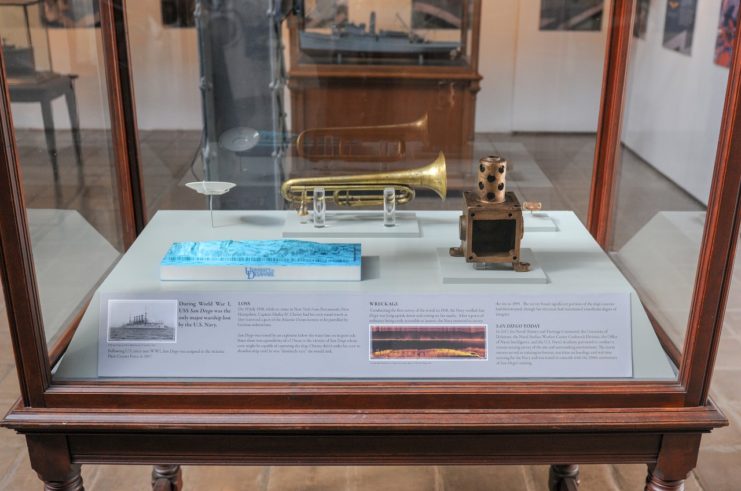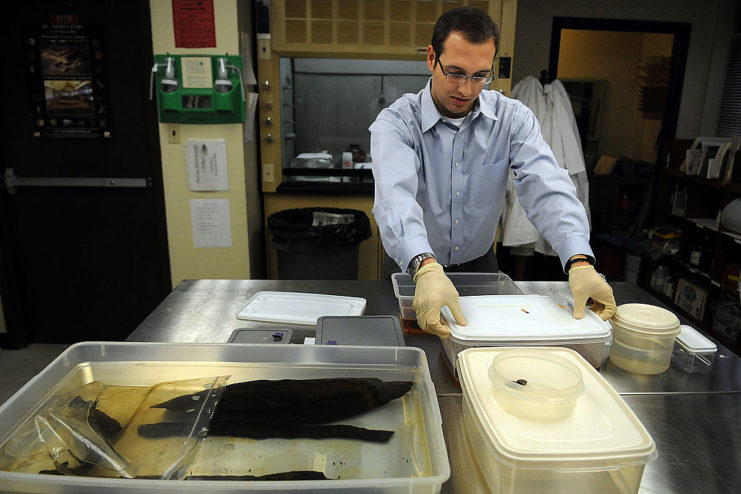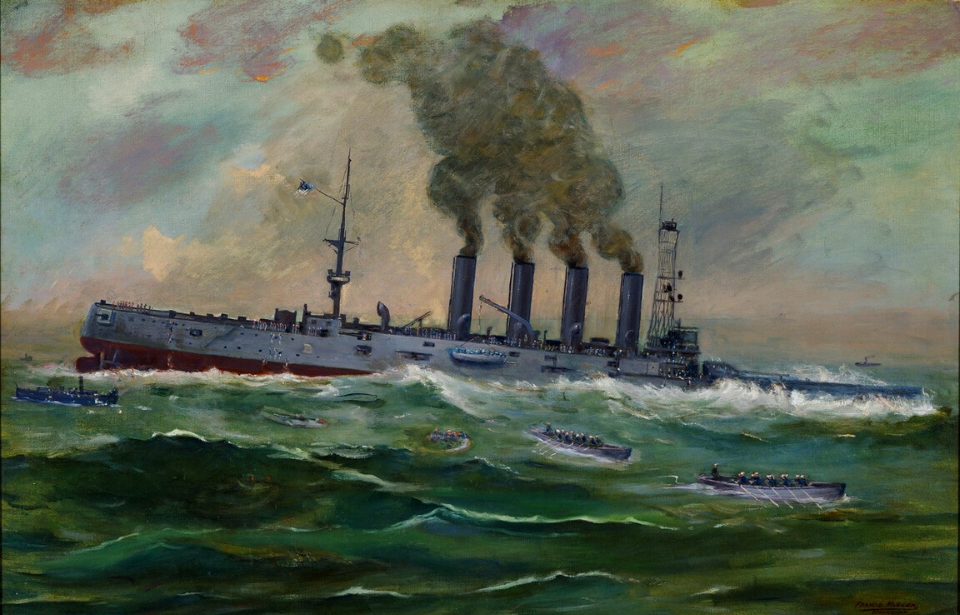Shortly after 11:00 AM on July 19, 1918, the Pennsylvania-class armored cruiser USS San Diego (ACR-6) – formerly known as the USS California – was rocked by an explosion on the ship’s port side, near the port engine room. Within 30 minutes, she was at the bottom of the Atlantic Ocean.
When no one took responsibility for the attack, historians were left to their own speculation – that is, until 100 years later, when an underwater archaeologist made an interesting discovery.
USS San Diego‘s (ACR-6) career was tactical and political

The USS California was launched on April 28, 1904 and commissioned just over three years later. She was assigned to the Pacific Fleet’s 2nd Division, conducting exercises and drills along the west coast. In March 1912, she joined the Asiatic Station, a squadron of US Navy vessels stationed in East Asia. California went on to protect US assets in Nicaragua, enforced the military’s presence off the coast of Mexico and kept the peace during times of political turmoil.
In 1914, the armored cruiser was renamed the USS San Diego. The following year, she was placed on reduced commission after a boiler explosion, which was just a taste of what was to come. San Diego returned to duty as the flagship for Commander-in-Chief, Pacific Fleet until February 1917, when she was placed into reserve status until the United States joined the First World War that April.
One day after the US declared war against Germany, San Diego was placed on full commission as the flagship of Commander, Patrol Force, Pacific Fleet. On July 18, she was ordered to join the Atlantic Fleet, serving as an escort for convoys navigating dangerous passages to Europe, as the north Atlantic was littered with U-boats.
Exactly one year later, she came face-to-face with the true dangers of the ocean.
Sinking of the USS San Diego (ACR-6)

On July 18, 1918, the USS San Diego left Portsmouth Naval Shipyard in Maine, bound for New York. Captained by Harley H. Christy, she traveled along a zigzag course as all lookouts, fire control parties and gun watches were on full alert.
The next morning, a massive explosion ripped through the ship’s port side. As the crew struggled to stop San Diego from taking on water, they soon realized the bulkhead near the explosion site was warped, making it impossible to close the watertight door between the engine room and the No. 8 fireroom.
As the flooding continued, Capt. Christy ordered the ship to proceed full speed ahead, anticipating they were under attack by a German U-boat. Not only was San Diego unable to accelerate, she could barely move at all – both engines were disabled and her machinery compartments were filling with water.
San Diego began to list, and, within 10 minutes of the explosion, was sinking. Christy ordered his crew to lower the lifeboats and abandon ship, and, within 28 minutes, the cruiser was at the bottom of the Atlantic, making her the only major American warship lost during World War I. Of the over-1,000 crewmen onboard, six died in the tragic incident.
Survivors were left with no answers

After the sinking, Capt. Christy remained convinced they’d been struck by a torpedo, but there was no evidence that a U-boat had been in the area at the time, and none of the lookouts saw the wake created when a torpedo is fired.
Others speculated it could have been a sea mine, but it’s unlikely one would explode at the stern, instead of the bow of the ship. An official inquiry concluded the sinking was caused by such an explosive, as six contact mines had been located in the vicinity, but the true reason wasn’t that simple.
In 2018, 100 years after the USS San Diego sank, USNI News announced that the cause of the explosion was still inconclusive. Luckily, the American Geophysical Union (AGU) was about ready to hold its annual conference, where a bombshell revelation a century in the making would be dropped.
What really happened to the USS San Diego (ACR-6)?

After two years of research using archival documents, 3D scans and high-tech models, a team of researchers from the Naval History and Heritage Command (NHHC) announced their findings. At the 2018 AGU conference, underwater archaeologist Alexis Catsmabis declared, “We believe that U-156 sunk San Diego.”
Catsmabis explained that the flooding patterns didn’t look like an explosion was set inside the vessel, and the hole ripped into the USS San Diego‘s hull “didn’t look like a torpedo strike,” either. It was concluded that the armored cruiser was struck by a U-boat mine placed by SM U-156.
“Torpedos of the time carried more explosives than mines – and would have shown more immediate damage,” shared marine scientist Arthur Trembanis. The explosion itself wasn’t that powerful, but San Diego was filled to the brim with coal, making her top-heavy enough to easily capsize as she took on water.
“With this project, we had an opportunity to set the story straight,” Catsmabis said in a press release, “and by doing so, honor [the memory of the six crewmen who died] and also validate the fact that the men onboard did everything right in the lead up to the attack as well as in the response.”
More from us: HMS Prince of Wales (53): The British Battleship That Took On Bismarck – and Survived
Are you a fan of all things ships and submarines? If so, subscribe to our Daily Warships newsletter!
Today, the wreck of San Diego lies upside down off the coast of New York’s Fire Island, some 110 feet below the water’s surface. Since the highest parts are just 66 feet down, the wreck has become a popular scuba diving attraction. It’s also been nicknamed the “Lobster Hotel” for the large community of lobsters that call the armored cruiser home.
